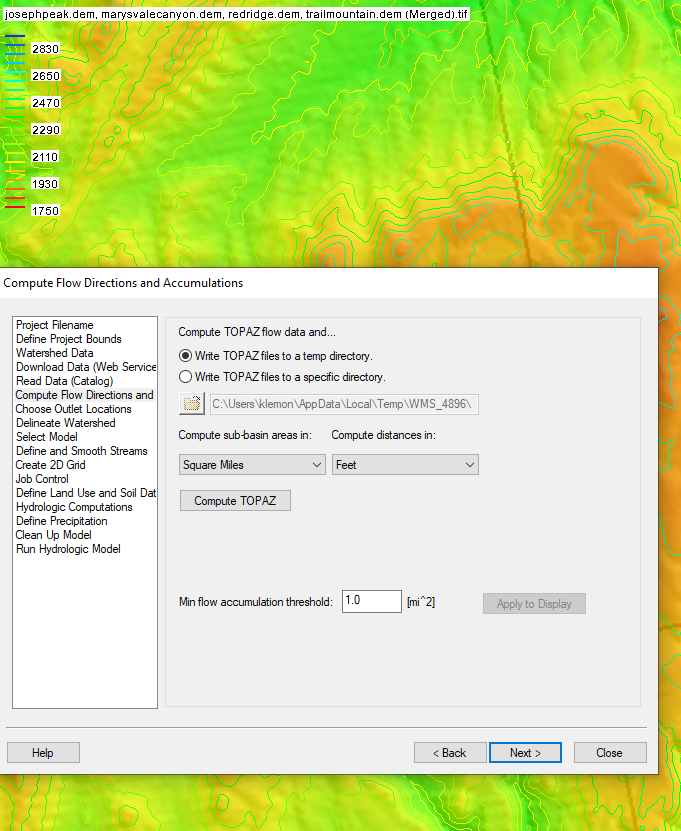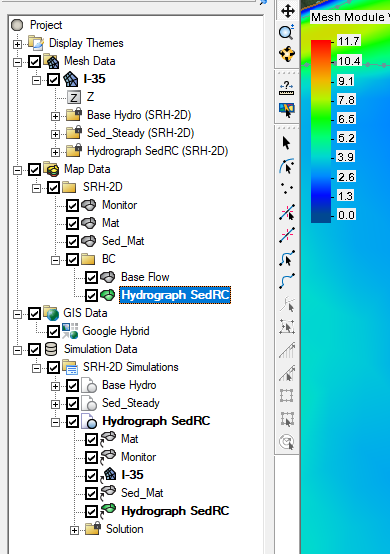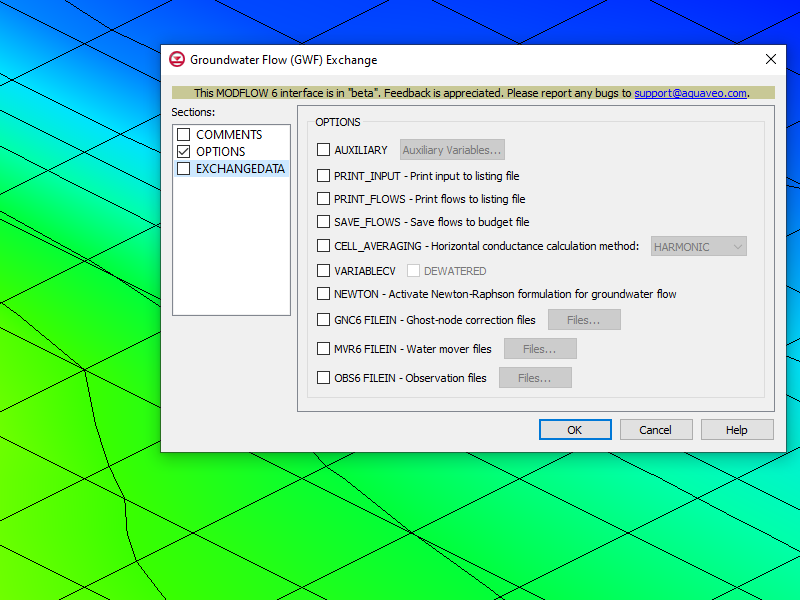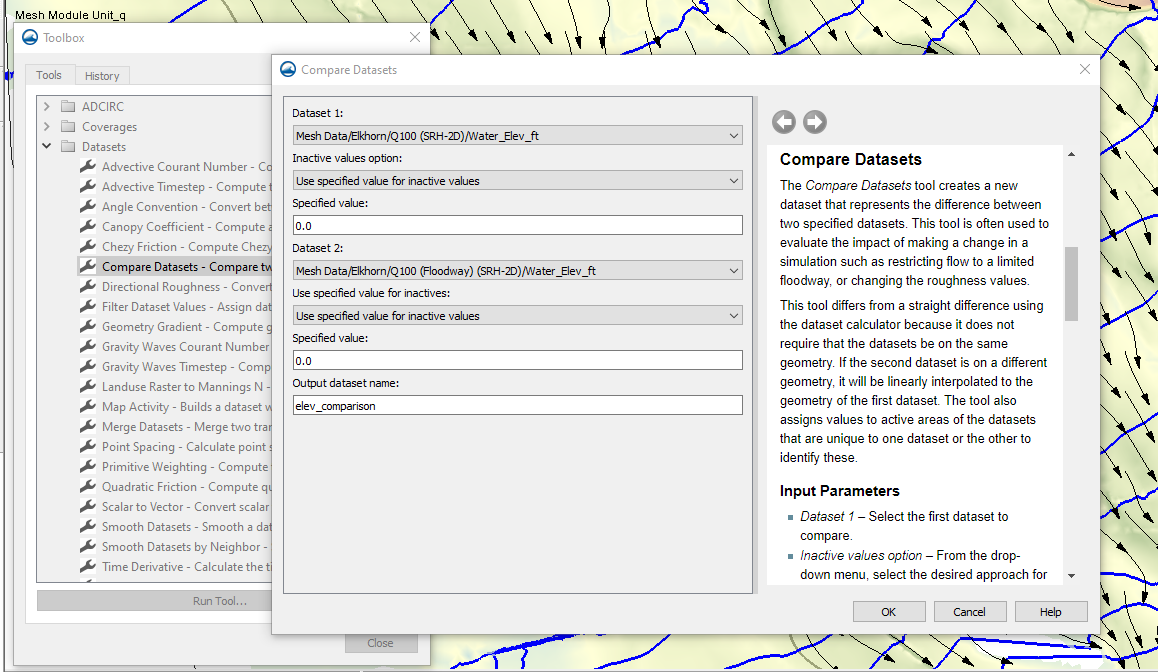Exporting Using the View Values Command
By aquaveo on March 30, 2022In your groundwater model in GMS, do you need to export only a specific dataset value? GMS provides a way for you to export different dataset values and save them as text files that you can continue to edit outside of GMS. This post will cover exporting values using the View Values command.
To export data using the View Values command, select a dataset in the Project Explorer then right-click and select the View Values command. This will open the Edit Dataset Values dialog. This dialog shows an array of data values for the selected dataset. From the Edit Dataset Values dialog, you can export the data values in a couple ways.
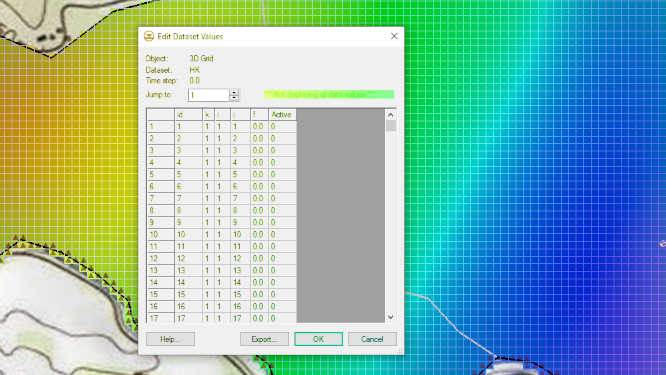
The first option is to click the Export button in the dialog. This will open the Dataset Filename dialog. Here you can give the exported file a name and save out the data as a tabular text formatted file. This exported file can be opened with a text editor or spreadsheet program. All values in the dataset will be exported with this value.
The second option is to select the data in the data array, then copy (Ctrl+C) and paste (Ctrl+V) the values into another document such as Excel or Google Docs. This method gives you the option to be selective about which data values to include. This method also allows you to save out the data in other file formats.
It is important to note that if you change the formatting in the text file, in excel, or google sheets and try to import the file back into GMS it may not import correctly. The format used in the Edit Dataset Values dialog is the format that GMS will be expecting when importing the data back into the project.
Try out exporting dataset values using the View Values command in GMS today!
